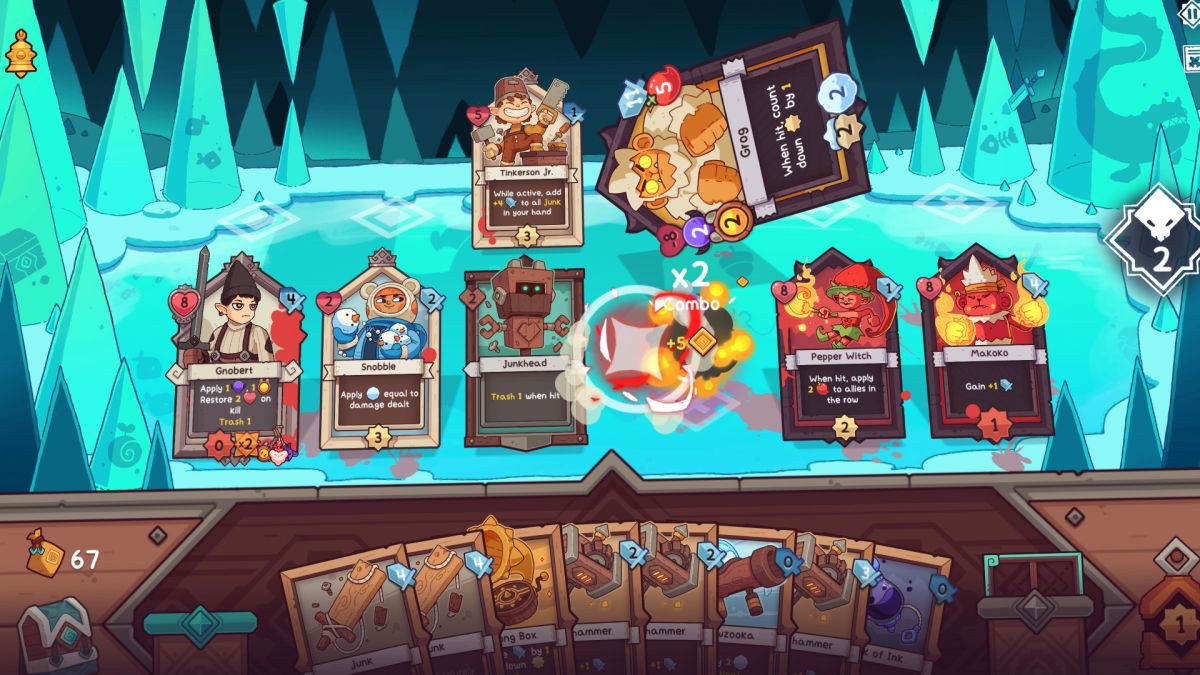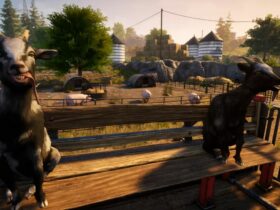Wild Frost Review
⌨️
In the world of Wildfrost, the sun is dead, evil forces corrupt everything they touch, and everything is covered in snow and ice. However, the first time you turn it on, you’ll be amazed at how cute and comfortable it looks. Its card-based combat is equally deceptive–simple rules and effects make them seem bland at first, but before you know it, you’ll succumb to brain-wrenching strategy.
Wildfrost is a roguelike deck building game reminiscent of Slay the Spire (opens in new tab) and Monster Train (opens in new tab). After choosing one of three randomly generated (and all lovable) adventurers, you start traversing the map, selecting nodes to visit for cards and buffs, in turn-based battles with the tundra’s formidable inhabitants between. Lose a fight–and you often do–and you’ll be thrown back into your village, where you can check for any permanent items you’ve unlocked before starting another match.
(Image credit: Deadpan Games, Gaziter)(Opens in a new tab)
Battles take place in two lanes, each of which can accommodate three allies and three enemies. Most of your cards are instant effects — such as dealing damage to enemies or freezing them — but a few are hero units that can be placed in a line. Once played, characters don’t attack immediately–instead, each character has a countdown that ticks each turn until they make a move, and enemies follow the same rules. You can only play one card per turn, but you’re free to rearrange the order of your heroes–important, since each attack, friendly or hostile, targets a specific spot in the lane they’re currently in.
It all comes together into a wonderfully layered puzzle. Not only do you have all the information on what’s going to happen each round, but because of the countdown, you also have what’s going to happen five or six rounds later. Success means not only figuring out when to use key cards, but also constantly tweaking your formation to ensure your key damage dealers are focusing where you need it, while your tanks are soaking up counterattacks. Over the course of a full battle it becomes a game of survival – if your leader dies, it’s game over, and even your allies can’t die for no reason, as they’ll take a lot of “injuries” “debuff the next battle. Every shot has to be choreographed to go where you want it – whether it’s a shot you deliver or an oncoming shot.
It’s like watching the cast of Adventure Time go on a skiing vacation.
Finding the right strategy can be difficult—even a little overwhelming—but it’s important to never feel like you’re missing any key information. The presentation of the game is very clean and clear, communicating everything you need to know at a glance through colorful icons and a simple but effective user interface. It makes learning the game a breeze, and whenever the game throws a new mechanic at you, it’s always easy to understand how it fits into the wider tactical tapestry.
This clever display is enhanced by an utterly charming cartoon art style — it’s like watching the cast of Adventure Time go on a ski vacation. The world of Wildfrost is filled with unique and adorable creatures, from wooden robots to berry men to crystal crabs, and that fun extends to the game’s mechanics. You give your heroes acorn shells to protect them, and instead of armor, you use peppers to increase their damage. To make a card a free action, you can attach a “Noomlin” to it, a happy baby goat creature that pokes its head out from the top of the card and beams with glee when you play it jump down. It’s full of character, and in a crowded genre, it’s surprising how refreshing it is that sometimes familiar effects aren’t named and animated the way you’d expect them to be.
(Image credit: Deadpan Games, Gaziter)(Opens in a new tab)
Equally imaginative and memorable are the game’s enemies. Each battle is a series of waves that culminate in a tough final opponent – essentially making each battle its own boss fight, requiring its own tactical approach. From a towering robot that forces you to shuffle under its target bombardment, to a feral cat in bone armor who retaliates every time he gets hit, to a giant penguin who kills a bunch of his minions every time you kill him Both get stronger; they’re all unique challenges and adorable odd creations. It’s all killer and there’s no filler–every fight feels like a major, fun challenge, and a great stepping stone toward the end goal.
That goal: reach the final boss with a deck strong enough to defeat him. Getting to this point requires hard-earned knowledge–not just what he can do, but which cards and buffs you should pick up on your journey. Events along the way offer just the right mix of randomness and control, as you can hunt down powerful cards, weed out weaker ones, add buffs to them that can completely change their character, and even duplicate your favorite card. Even in the end, the deck is lean — especially since once a unit is played, it leaves your deck unless you put it on hold for healing rest — allowing you to really focus on a consistent strategy.
(Image credit: Deadpan Games, Gaziter)(Opens in a new tab)
As a modest but vigorous 12-hour challenge, it brings a breath of fresh (cold) air to the genre.
Once you manage to defeat the final boss, the game offers a really clever twist that I don’t want to spoil here – but suffice it to say, it ensures that every time you face the final battle it’s a different and interesting one Challenge it, forcing you to always adapt and try new things on subsequent runs.
Our goal is to keep you coming back for more, and Wildfrost truly has that magical “play it again” quality. But as it stands, I don’t think it has enough variety and progression to last as long as fans of the genre have come to expect. I’ve put in 200 hours in Slay the Spire, and there’s still something I haven’t achieved – after about 12 hours of playing Wildfrost, I feel like I’ve seen most of what it has to offer. It’s a lot of fun for 12 hours, but it does feel like it needs some substantial DLC or post-launch updates to reach the replayability heights of its class.
(Image credit: Deadpan Games, Gaziter)(Opens in a new tab)
It doesn’t help that many of its late-game unlocks are specific and convoluted to the point of being less compelling to pursue. Stacking 50 acorn shells on a target, for example, to unlock a new charm—something I need to build around my entire deck, rely on some lucky pull, and then awkwardly prolong the fight to achieve it. Some might like the puzzle element, but to me it felt like the game’s core strengths weren’t being played to.
But those are minor criticisms, really. As a modest but potent 12-hour challenge, it’s a breath of fresh (cold) air for the genre, a tactical knot that’s both hard to untangle and accessible. Let it seduce you with its charms, then plunge you into a fierce battle of wits where victory is at hand, and if you’re smart enough, you can find it.
Check more articles in our categories Gaming & News & Anime.
Thanks for visiting we hope our article Wild Frost Review
, don’t forget to share the article on Facebook, pinterest and whatsapp with the hashtags ☑️ #Wild #Frost #Review ☑️!














Leave a Review